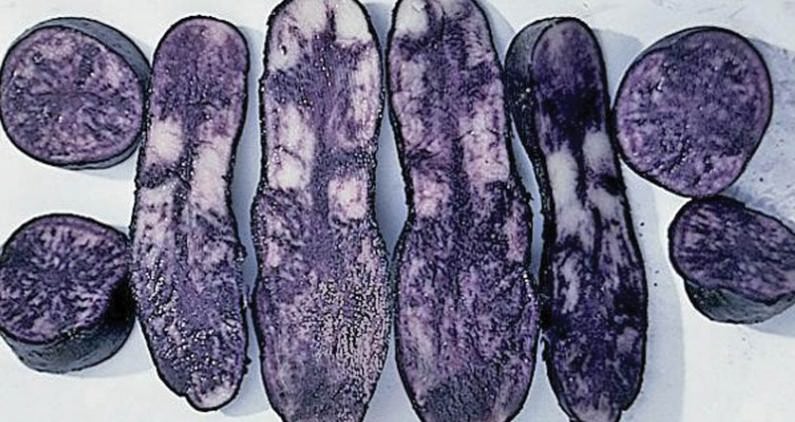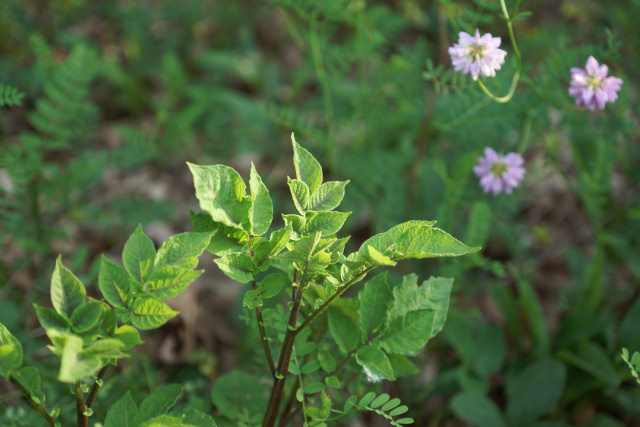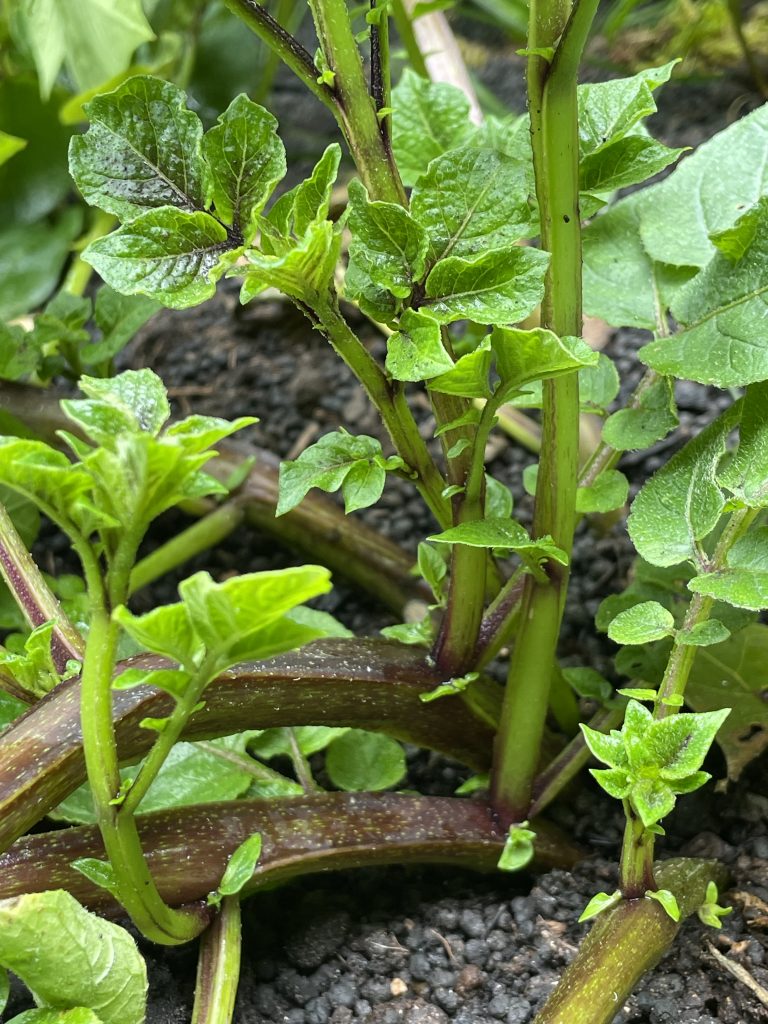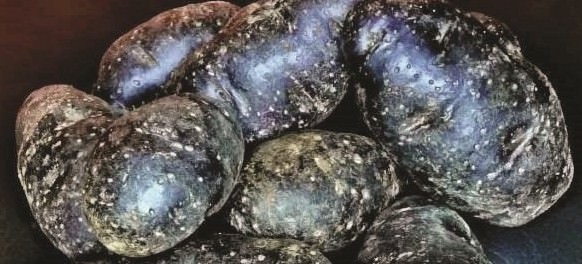Experience-Seeds-Knowledge-Plant Discoveries-Ecological Enrichment-Join Now Click Here!


The Ecos Purple Potato

Thriving in the midst of crown vetch in my mother’s flower garden, the Ecos Purple potato benefited from its nitrogen fixing capabilities while demonstrating its perennial capabilities for over a decade.
The Ecos Purple Potato
Once at a plant auction at a horticultural event, I purchased a few tubers of a purple fingerling potato. The professor that offered it said it was part of a breeding program for potato at the university he taught at and left it at that. He asked that if I sold it not to use the university or his name. I obliged. I took it home and planted it in my garden next to my garage. I noticed the heavily branched potato grew over ten foot long vines in my rich black prairie soil. Soon I was frying them in ghee for my family. I gave some to my aunt and uncle who always grow potatoes and my brother and sister-in-law. Their critiques were not as glowing as mine. I will channel Rodney Dangerfield here. “Tough crowd!” I am not sure but I may have wrapped some up for a Christmas present along with my jams that I make every year. Lets face it, I was overly excited. I wonder what they said when they opened up the package on Christmas morning. “Sweets with sweets war not, joy delights in joy.” Shakespeare. Not likely. It’s a potato where you can buy 50 pounds of them for ten bucks off a northern Michigan highway.
Over the next thirty plus years, I grew the tubers in many locations including my home when I lived in town, my farm, my parents home and where I live now. At my home they reside on the edge of a forest wedged into a hillside surrounded by Norway spruce that the previous owner planted. At my parents home I put them on a hill in the middle of a planting of crown vetch using a planting bar that was previously used for Christmas trees. The potato thrived in that environment despite no care for twenty years. Crown vetch did not slow the potato despite its vigor. It contributed to its growth by its ability to fix nitrogen. I began to notice that tubers left in the ground no matter the location always sprouted and regenerated on their own the following year. There was very little or no damage during winter. I discovered by accident the tubers hardiness. I threw a bag of them in a snow bank in early February near my garage and waited for spring. They did not turn to mush despite the minus 6 F.A few potato growers told me it wasn’t the Purple Peru variety but similar. They rarely flower. There is a tendency for the plants to runner a little which is distinct. The plant produces secondary branches often near the base of the plant directly from each node as well as the base of the plant. This has its advantage as a lot of foliage is produced making for a strong vigorous plant even in dry conditions.

The plants produce a mix of small and large tubers on the same plant. There appears to be strong resistance to the common potato blights. Near the end of my production of the tubers for my nursery, Bill Whitson from Cultivariable let me know that the species I was using was not correct. A scientist with the USDA had shown it was incorrect. I couldn’t find the specifics of that but was grateful. Perhaps it became a number of an accession. At that point, it did not matter. I was given a useful plant and discovered a means to create a perennial food crop that could be widely used in many types of agroforestry applications as well as permaculture uses. It is purple and it is from Peru. If you think about it, I did nothing. I found a new use of an old food friend and highlighted it’s range of adaptability. Although small in size, this durable little fingerling potato makes it possible to establish potatoes the same way one would grow daylilies in a modern day ornamental landscape. This year for the first time in over a decade I brought back this selection back in my plantings and will offer it this winter in a limited amount. Each order is large enough to create a hundred plants. Check the website. Shipping can start this fall in October after harvest or delayed until March of 2024.
